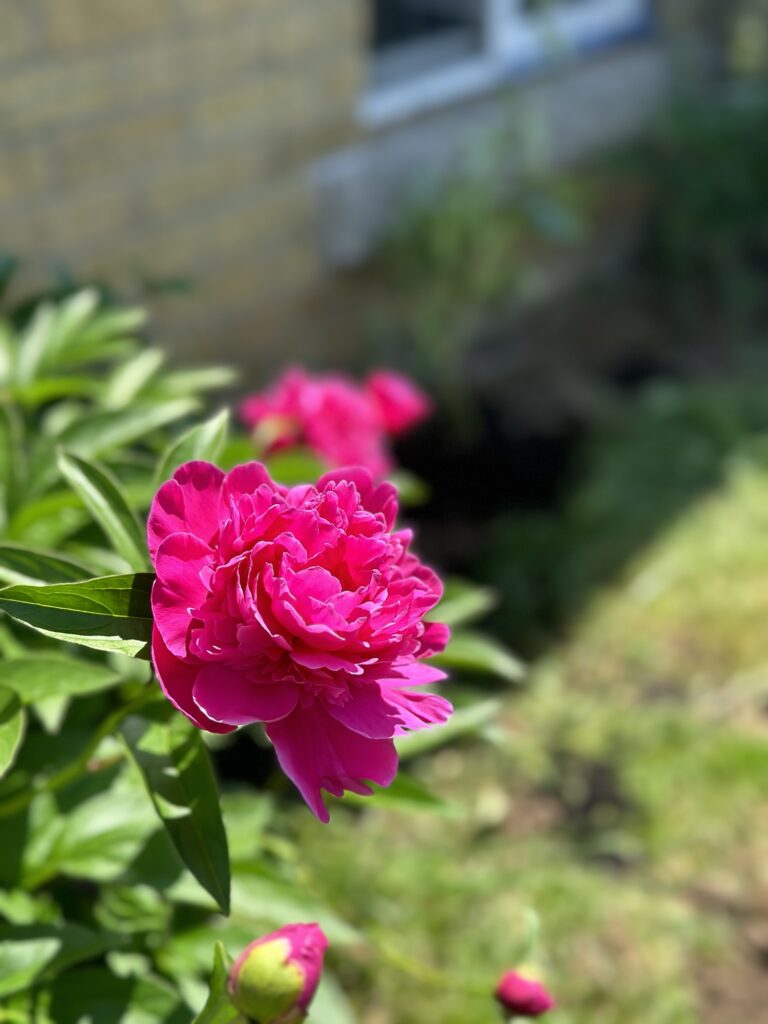If you’ve ever planted peonies with visions of lush, romantic blooms, only to sadly end up with lots of leaves and barely any flowers, you’re not alone.
The culprit?
It might be hiding just beneath the surface, in your soil that unknowingly has too much nitrogen.
Peonies are picky when it comes to nutrients. While they need a balanced diet to thrive, too much nitrogen encourages leafy growth at the expense of those dreamy blooms we all love and want.
Luckily, checking your soil’s nitrogen levels is easier than you might think—and it could be the missing piece in your peony success story.
In this post, I’ll walk you through exactly how to check the nitrogen levels in your garden soil, what the results mean, and how to bring your soil into blooming balance.
Let’s dig in!
Nitrogen (N) is one of the three major nutrients plants need to grow, along with phosphorus (P) and potassium (K) often labeled as N-P-K on fertilizer packages.
Nitrogen’s job?
It fuels leafy, green growth—like stems and leaves. It’s essential, especially in a plant’s early stages.
While nitrogen is crucial, peonies are bloomers, not just growers. If your soil is too rich in nitrogen, your plant puts all its energy into making leaves and stems and not flowers.

When there’s too much nitrogen in the soil where your peonies are planted you’ll have lush, deep green foliage with strong stems (but not necessarily blooms) and you’ll experience few or no flowers at all. Your plant’s may also become more susceptible to disease or pests.
If you suspect your soil is nitrogen-heavy (or a test confirms it, I’ll show you how to test your soil later in this post) here are some ways to bring it back into balance:
Avoid High-Nitrogen Fertilizers
Check your fertilizer label: high first number = high nitrogen (e.g., 30-10-10). For peonies, use a balanced or low-nitrogen fertilizer, like 5-10-10 or 10-20-20.
Add Carbon-Rich Organic Matter
Carbon helps “tie up” excess nitrogen. Try adding:
Composted sawdust or straw Shredded leaves Wood chips (aged)
These materials decompose slowly, balancing the nitrogen and improving soil texture over time.
Use Phosphorus-Rich Amendments
Phosphorus promotes flowering. Try adding: Bone meal Rock phosphate
These can help nudge your peonies toward blooming instead of just bulking up their leaves.
Grow a “Nitrogen Sponge” Cover Crop
In the off-season (like fall), you can grow something like rye, oats or buckwheat close by.
(These plants absorb excess nitrogen and can be cut down and tilled into the soil to enrich it naturally.)

HOW TO TEST YOUR SOILS NUTRIENTS
Use a Soil Test Kit (Most Popular Method)
Buy a home soil test kit from your local garden center, hardware store, or online. Look for one that specifically shows N-P-K levels (Nitrogen–Phosphorus–Potassium). Follow the instructions which usually involves mixing soil with water and a reactive tablet or solution.
Nitrogen = N, and the result is often shown as low, medium, or high.
(Pro tip: Do the test in early spring before fertilizing.)
Send a Sample to a Local Lab
In Ontario, you can send your soil to places like the University of Guelph Soil & Nutrient Lab. You’ll get a full analysis of nitrogen and other nutrients, plus pH and organic matter in your soil. This is more accurate than home kits and great if you’re serious about long-term garden success.
Look for Clues in Plant Behavior (if you’re in a pinch)
While not precise, here are a few indicators that something might be wrong with your soil.
As we mentioned earlier, too much nitrogen will give you lush green leaves, but few or no blooms. Too little nitrogen will give you yellowing leaves, slow growth and small buds. A healthy balance of your soil will give you exactly what you’re looking for, strong stems, deep green leaves and robust blooms.

To summarize, if your soil’s nitrogen levels are too high you will want to avoid high-nitrogen fertilizers (the first number in N-P-K) add compost, bone meal, or wood ash to help balance things and choose a low-nitrogen fertilizer like 5-10-10 for peonies.
Peonies are one of the most rewarding flowers to grow, but like all great things, they flourish with the right foundation. By understanding and managing your soil’s nitrogen levels, you’re not just troubleshooting a garden mystery—you’re setting your plants up for decades of stunning, faithful blooms.
Whether you choose a quick home test or go the extra mile with a lab analysis, that little bit of soil science can make all the difference.

So, before you reach for that fertilizer or wonder why your peonies look leafy but bare, check your soil.
Your future self (and your bouquet-filled vases) will thank you.
Did you grow any peonies this year? Have you ever added buckwheat to your soil in the fall? If so, did you notice a difference in your blooms the following year?




